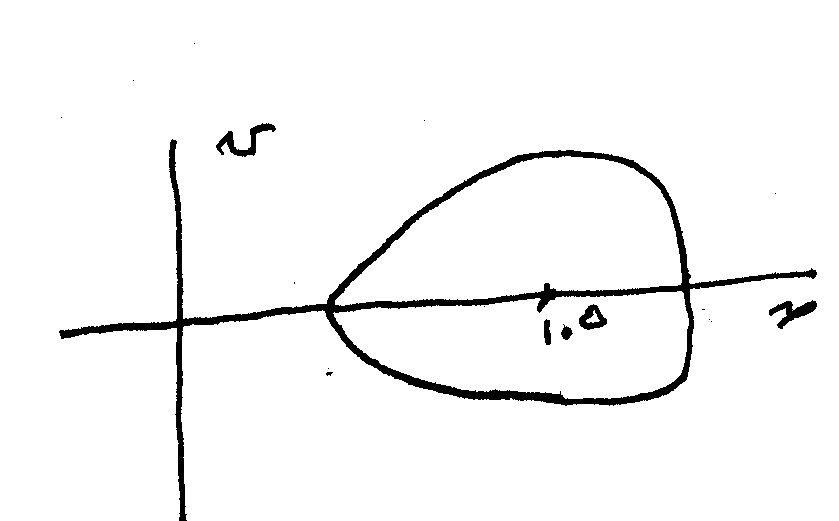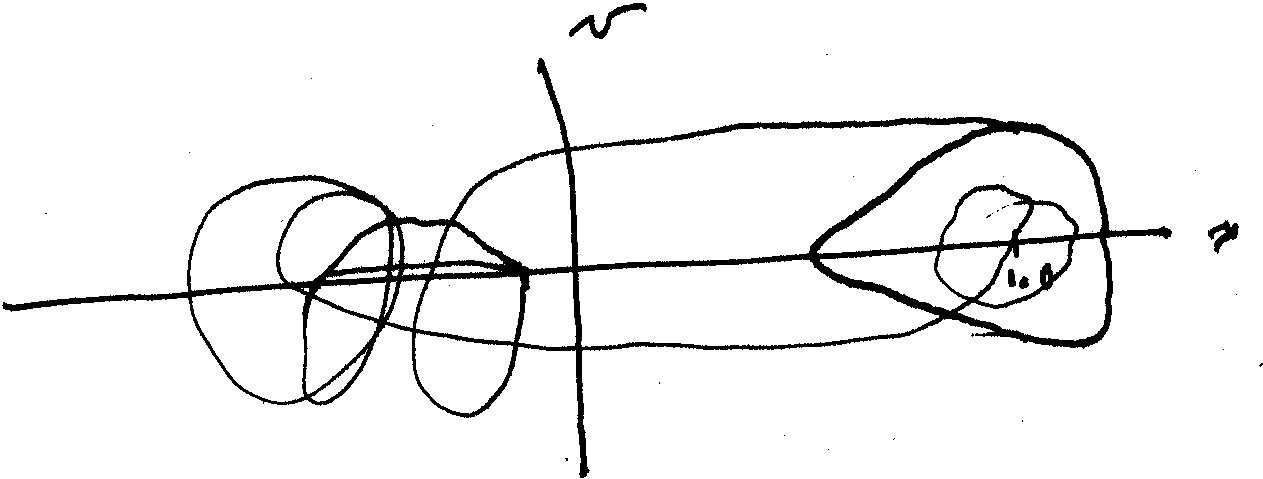Next: Strange Attractor Up: Duffing_story Previous: Chaotic Solution of the
The behavior of the Driven Two Well Duffing Oscillator is even more stunning that the Driven One Well system.
Limit Cycles
At small driving amplitudes the system stays bounded in either
of the two wells and exhibits Limit Cycles.
The following sketch shows the solution at driving strength ![]() .
Note that the amplitude of the driving term
used here is smaller than in the
one well system since a new measure of strength is set by
the barrier height between the two wells.
.
Note that the amplitude of the driving term
used here is smaller than in the
one well system since a new measure of strength is set by
the barrier height between the two wells.

Transient Chaos
At larger driving amplitudes the system may traverse from one well to the other. At not such a high driving strength, the systems exhibits temporarily a chaotic behavior before settling in a Limit Cycle. This is called transient chaos.
The following sketch shows the solution at driving strength ![]() .
.

Chaos
At larger yet driving amplitudes the system has an easier time traversing from one minimum to the other. The system may then become chaotic. A characteristic of the chaoticity will then be for the steel beam to bounce from one well to another in an erratic manner.
As in the case of the one well system, the solution now fills in the phase space.

Only a stroboscopic surface of section can reveal the order in this solution.
Michel Vallieres 2014-03-04